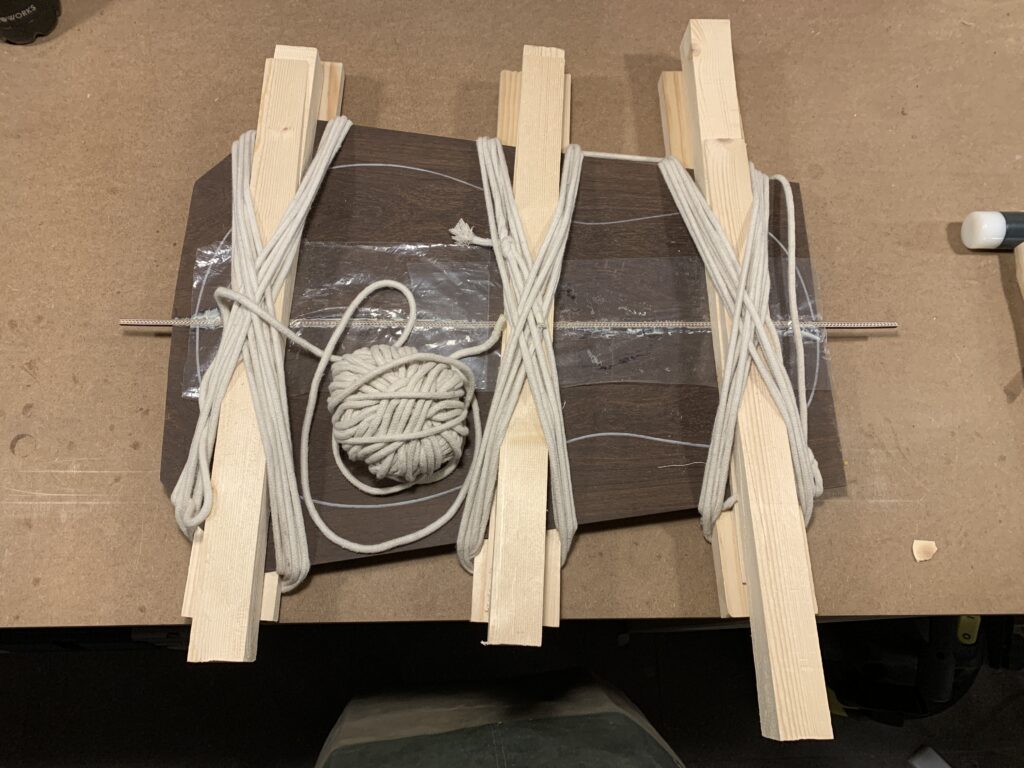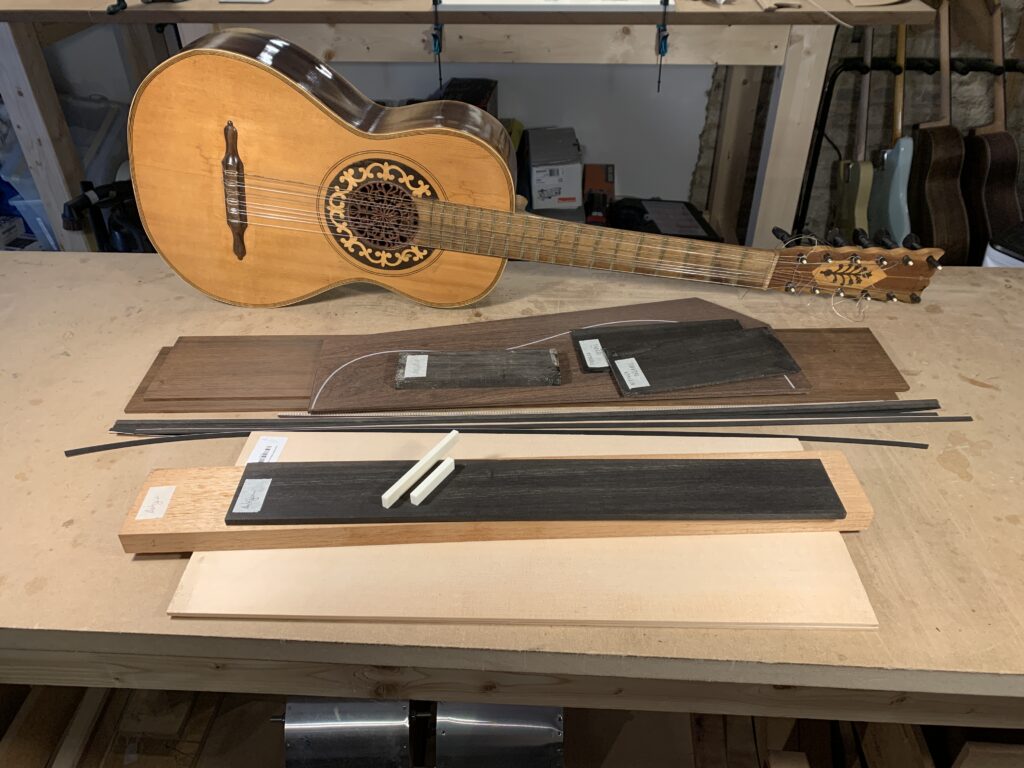The size and shape of the Spanish guitar, as we know it today, was not defined until well into the 19th century. We have to give credit for this to Antonio de Torres who we talked about in our previous post in which we discussed our relationship with the “Spanish style” of construction. Before this size of guitar was established, which could be equivalent to an OM by acoustic guitar standards, the body was smaller, characteristic of the Romantic guitar and its big sister the vihuela.


The vihuela is a plucked string instrument that had its maximum splendor in the 16th century in Spain and Italy. With 6 orders (pairs of nylon strings), its dimensions are close to what we could currently consider a parlor or a Single 0.
Due to the things of life, which we can tell you in more detail if you visit our workshop, a 19th century vihuela ended up in our hands a few years ago. It has been bouncing around in different moves to our current location, but, in all this time, we have kept it in mind and from time to time we took it out of the case to, through its label and its various repairs undertaken in these 150 years, investigate how would be the construction techniques of the time and the quality of the materials used. We can tell you little about the builder, only the information on the label: his name was Eustaquio Ramírez, he had a shop in El Rastro in Madrid and built this instrument in 1877. The woods he used are spruce for the top and Spanish walnut for the back. Spanish walnut is one of the most used woods in classical guitars throughout history. The important thing for us, besides these more technical considerations, is that whenever we picked up the vihuela it gave us a feeling of a well-built instrument, made with care and that it has survived many battles. We found the body shape to be very comfortable and beautifully designed. There is no doubt that our friend Eustaquio put his heart into this instrument. The funny thing is that its shape reminded us a lot of the first acoustic guitars that Martin Guitars built in the middle of the 19th century (yes, friends, Martin Guitars has been around for so long), based on the concert guitar of the great Spanish guitarist Delores Nevares de Goñi.


Then, when after the confinement we were considering new projects and thus expanding our range of models, the idea of making a 12 fret guitar came up. 12 fret acoustic guitars were very popular in the United States before World War II. Since a few years ago more and more manufacturers include these models in their catalog and more and more are used in all kinds of musical styles because of the particularities of the sound provided by the place where the bridge is glued on the top, which by the scale of the neck, is different than in a 14 fret guitar and offers other sound qualities that make it very attractive and very requested by musicians of blues, folk and more acoustic music in general.


As soon as we started to think about this project, our beloved vihuela came to our mind. What if we were inspired by it to make our twelve fret model? We immediately loved the idea and saw that it fit perfectly with our philosophy of looking to tradition to build instruments that are totally compatible with the contemporary musician. Here is where we were missing the last touch to round out the project, a musician with personality and love for the acoustic guitar who could help us to finish outlining the details of the instrument such as the type of wood, the finish, the type of headstock… We have been lucky to have the know-how of Nacho Mur (La M.O.D.A), a guitarist we have been following for a long time. He has shared with us his preferences when it comes to wood and the sound he likes in his guitars. This is how we have reached this point in our history where things are coming together in harmony and we are taking the first steps in the construction of our first twelve fret guitar, which we have baptized as La Antigua.
Following Nacho Mur’s ideas and the concept we have in Urdiain Guitars, the woods and the design are kept within a sober and functional style. All this will give this instrument a fine line in terms of design and a deep sound, with personality and reminiscent of the early twentieth century with all the tradition and openness to new musical trends so characteristic of that time.
Woods for La Antigua:
Solid sitka spruce top.
Madagascar rosewood sides and back.
Cedar neck with ebony fingerboard (we are a fan of this combination).
Ebony bridge and borders


Thanks for reading us. We will keep you posted on how the construction of this guitar evolves. For any question or visit to the workshop, do not hesitate to contact us at hola@urdiainguitars.com

